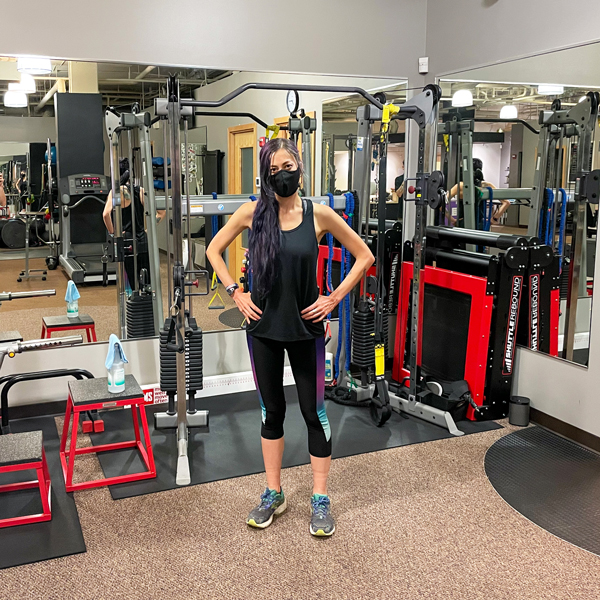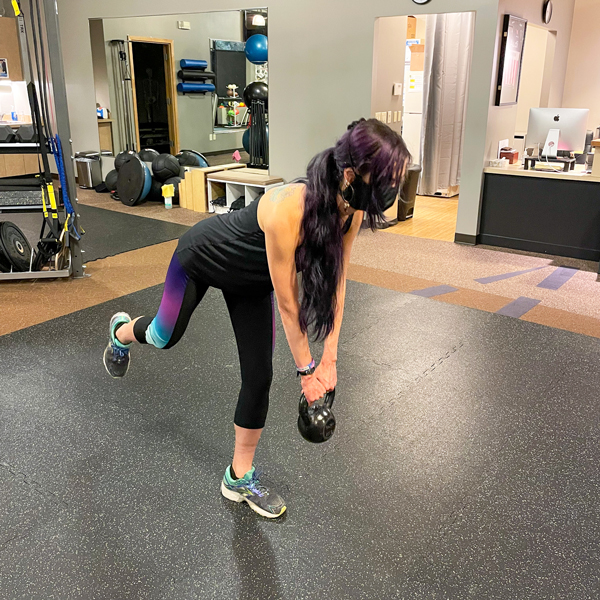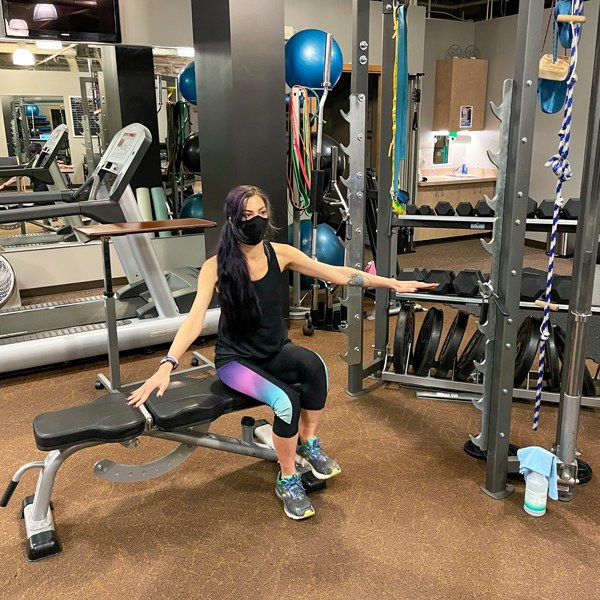Running Assessment with MoveMend (Part 2 of 2)

Three weeks ago, I had the first part of a two-part running assessment with Dr. Tanner Melnick at MoveMend. As a refresher, it’s been 14 years since a professional has looked at my form and offered guidance on what needs adjustments for better running. There were many things I learned that day:
- Circumduction (how much my feet swing out and cross over my body’s midline)
- Cadence (the steps per minute)
- Running quieter (I’m very stomp-y)
- And more
The past three weeks, I applied Tanner’s recommendations to fix my running form. These small adjustments make a big impact, and keeping this form up has been harder than expected. With each stride, I did my best to run quieter while keeping my cadence to 175 steps per minute. Staying with the beat has been physically and mentally challenging. Deliberately aligning my body while running takes a kind of focus that will take some time to build.
I also found that I space out much more than I realize when running. When that happens, I don’t even notice it. My mind drifts into auto-pilot, and before I know it, I’m slogging up a hill with my old habits.
When I come back to earth, I nudge my footsteps back into place. My heart rate goes through the roof as I do my best to stay with the beat.
When I reported all of this back to Tanner, he said that other runners have similar experiences. Adjusting the form will take longer than three weeks. It could be a couple of months before these adjustments start to feel natural.
Capacity vs. load
The body has a certain capacity for stress, or load, that it can handle. In this case, my load is the increasing weekly mileage during marathon training.
Running is physically stressful, largely because of the feet’s initial contact with the ground. With every foot step, the impact force is 2 1/2 to five times the body weight upon landing. Multiply that by 26.2 miles, and that’s tons upon tons of force that the body is absorbing.
The way I increase my capacity is by gradually putting on more mileage every week, and then scaling it back every three weeks. Every week, I push my body just beyond its max capacity to adapt—especially with the long runs. It’s good to do that often enough to get stronger. But if I did that every day without giving my body a chance to catch up, that can lead to an injury for sure.
I follow the training plan and increase my capacity safely. All is well, unless I’m not eating or sleeping enough, or even if I’m stressed. (I even shared what helps me get more rest after noticing my performance had seen better days.) It makes perfect sense, because without enough rest, my body can’t increase its capacity for a bigger load, or more miles. If I’m not taking care of myself, then my body won’t adapt as well.
Posterior chain exercises
My quadriceps (front thigh muscles) have been doing most of the work when I run, so it would be helpful to strengthen my posterior chain, or the backside of my body: the glutes (the butt muscles), hamstrings (the back of the thigh), and calves. When the backside of my legs work together, that would give more power to push me forward as I run. This is especially important as I run up those steep Seattle hills; it means switching to a lower gear.
Doing these posterior chain exercises would help make my hips stable, so there’s less circumduction. It would be easier to keep a good running form for longer as well. Maybe that would make my slight hip flexor pain feel better.
Tanner introduced four different exercises to help strengthen my hips so that I can run stronger. He recommended doing each set until reaching fatigue, and then switching to the other side. As far as how often to do these, he said that at least once a week is enough.
Single-leg dead lifts


This exercise tested my balance. I focused on my breath and core, and slowly hinged forward at the hip on one leg with a 20-pound kettlebell. I stopped when I felt a good stretch in the hamstring. Then I slowly stood up to the starting point without putting my raised foot on the ground. I continued with more reps, dipping forward again like one of those toy drinking birds. My right leg is stronger, but I have better balance on my left leg. I kept doing the dead lifts on each side until my hamstrings burned.
Side plank hip abduction

With my elbow firmly planted on the ground below my shoulder, I slowly dipped my hips as closely to the ground as possible and then raised them back up. I could feel the burn on my lower back and glutes.
From my experience, I find it super helpful to strengthen the core. When started I running more marathons, my lower back would ache from holding myself up for many miles. A strong core gives more support for those long distances.
Single-leg heel raises

A wooden block or a stool could be used for single leg heel raises. It felt easy at first. It wasn’t long until my calves burned as I slowly pushed my weight onto the ball of my foot. After about 12 of these, I switched to the other leg.
Single-leg sit-to-stand


The single-leg sit-to-stand exercise was the hardest. I had to push myself to stand using just one leg without momentum. At first, I focused all of the energy in each of my quads, or front thighs, to push me up. I fell over a couple times. Then I remembered to shift the power source towards my glutes and hamstrings. Not only did using those muscles give me better balance, they also lifted me more effectively. This exercise was still so hard! It didn’t take many reps to be done with this one, so it must be very effective.
Applying what I learned at MoveMend to run better
Now that I have a better idea of how to run stronger, I can apply what I learned from MoveMend and hopefully get a faster time. I’m still mindful of keeping my footsteps quieter as I run to a higher cadence. Changing old habits is going to take some energy and patience. These new posterior chain exercises should make me more stable, so that I can use my energy to run stronger. Eventually all of this will become second nature. Maybe running will be even more enjoyable, since I know how to move better.
*Thank you, MoveMend, for sponsoring this post.
Disclaimer: This blog is not intended as medical or professional advice. I’m sharing my experiences, and they should not be a substitute for physical therapy advice for anyone. Any exercise has potential to cause injury or pain if it’s done incorrectly. You should consult with a physical therapist or doctor for any medical advice.
Leave a comment